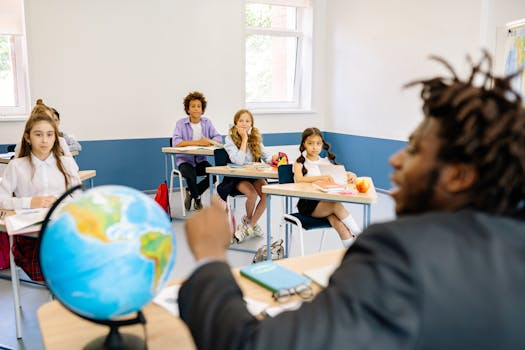Climate Literacy: Teaching Sustainability in Every Subject
As the effects of climate change become more apparent, the need for climate literacy and sustainability education has never been greater. Our planet is facing critical environmental challenges, and it is crucial that we equip our youth with the knowledge and skills to address them. However, teaching sustainability can no longer be confined to science or ecology classes – it must become an integral part of every subject. In this article, we will explore the concept of climate literacy and how educators can incorporate sustainability into all areas of education.
The Importance of Climate Literacy
Climate literacy refers to the understanding of how the Earth’s climate system works and how human activities contribute to climate change. With climate change becoming a top global concern, it is essential to educate the younger generation about its causes, impacts, and possible solutions. By imparting climate literacy, we can empower students to become environmentally responsible citizens and active agents of change.
The Role of Education in Promoting Sustainability
Education plays a crucial role in shaping individuals’ beliefs, values, and behaviors towards sustainability. By embedding sustainability principles into the curriculum, schools can cultivate a culture of sustainable living in their students. Furthermore, incorporating sustainability into different subject areas can help students see the interconnectedness of environmental, social, and economic issues, promoting a holistic understanding of sustainability.
Integrating Sustainability into Every Subject
Sustainability education does not have to be limited to just science or environmental studies classes. Here are some ways that educators can incorporate sustainability into various subject areas:
Mathematics
Incorporate real-life examples of sustainability into math problems, such as calculating the carbon footprint of a household or the energy saved by using renewable sources. This can help students see the practical application of math in everyday life and how their choices can impact the environment.
Language Arts
Use literature and writing assignments to explore sustainability topics, such as climate change or renewable energy. This can not only improve students’ reading and writing skills but also encourage critical thinking and empathy towards environmental issues.
Social Studies
Social studies classes provide an excellent opportunity to discuss the social and economic impacts of climate change, as well as how different societies have approached sustainability. Students can explore the history and politics of environmental movements and analyze the role of governments and individuals in addressing sustainability challenges.
Arts
The arts can be a powerful tool in promoting sustainability. Students can use different forms of art, such as painting, photography, or music, to express their feelings and ideas about sustainability. Teachers can also incorporate sustainability themes into art assignments or projects, promoting creativity and critical thinking.
Physical Education
Sports and physical activities are not exempt from sustainability. Teachers can use PE classes to discuss the impact of sports on the environment and encourage students to participate in eco-friendly activities, such as picking up trash in the school grounds or using sustainable sports equipment.
Challenges and Solutions
Of course, incorporating sustainability into every subject may come with its challenges, such as limited resources or resistance from students or teachers. However, there are ways to overcome these challenges and promote sustainability in education:
Collaboration and Interdisciplinary Approaches
By working together, educators from different subject areas can share ideas and resources to incorporate sustainability into their classes. Interdisciplinary approaches can also help students see the interconnectedness of sustainability issues and the importance of collaboration in solving them.
Hands-on Learning
Experiential learning, such as field trips or hands-on projects, can be a great way to engage students and make sustainability education more tangible. It also allows students to apply their knowledge and skills in real-world scenarios.
Student Involvement
Involving students in decision-making and planning can foster a sense of ownership and responsibility towards sustainability. Students could be responsible for identifying sustainability issues in their school or community and coming up with solutions to address them.
In Conclusion
Teaching sustainability in every subject can make education more relevant and meaningful to students. By equipping our youth with the knowledge and skills to promote sustainable living, we are not only preparing them for the future but also empowering them to become active participants in creating a more sustainable world. In the words of environmentalist and author Bill McKibben, “The job of schools is to help the young work against the prevailing culture of consumption.” And by making sustainability a part of every subject, we can do just that.








